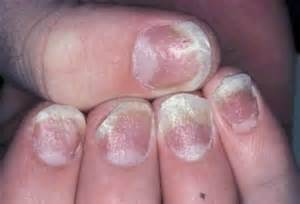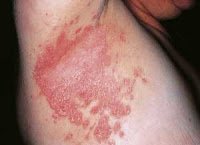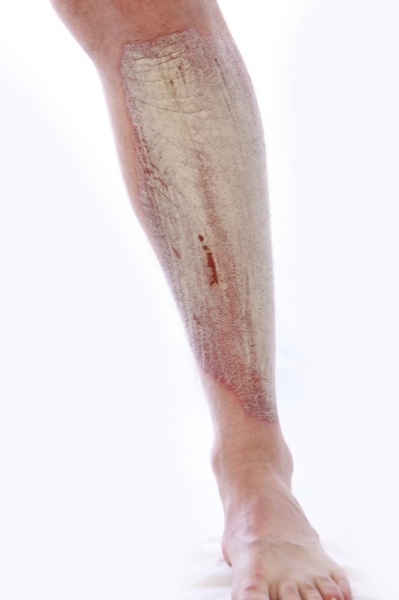Signs of Psoriasis: Hand, Foot and Nail Psoriasis and Health Issues
It is not always easy to attribute early signs of psoriasis to this particular disease, as other skin conditions or ailments may also cause the same problems. The various factors, which can accompany multiple health issues, require a doctor to confirm your assumed diagnosis, a process that may take some time, as you must eliminate any other possible causes.
It is normal for you to find the process frustrating but if you are aware of the early signs and the ways they differ among the various types of psoriasis, you have a better chance at a successful treatment.
Signs of Psoriasis
Nail Psoriasis
 Nail psoriasis
Nail psoriasisNail psoriasis has many signs, all of which may make you self-conscious about your appearance but are usually less painful or cause milder discomfort than the other types of this skin condition. In general, the signs of nail psoriasis mostly occur as discoloration, usually red and yellow, or as a weakening of the nail, causing it to loosen, crumble, or wear away in small areas, resulting in pit-like formations.
In some cases, the nail may show a horizontal line, small white areas or black vertical lines that go all the way through to the cuticle. Fungal infections may also occur and people with psoriasis and arthritis are more susceptible to these cases of the disease than those without arthritis.
The Hand and Foot
Contrary to what you might think, hand psoriasis is not the same as nail psoriasis, as the two are quite different in their signs of psoriasis. To start, psoriasis of the hands and feet is more uncomfortable, particularly because people use these parts of their body so often throughout the day.
The continuous use can aggravate the brown, round and scaly pustules that take time to dry out and peel off the hands’ palms and the soles of the feet. This may also be the same reason as to why this particular form of psoriasis has a tendency to reoccur as frequently as every few days.
Obesity and Pain

Inverse psoriasis is most common among individuals who are overweight but, as with any ailment, everyone is susceptible to obtaining this disease. Different from other skin conditions in this family of infection, the signs of psoriasis in this case tend to include a higher level of pain and itching but no scaling.
Instead, inverse psoriasis plagues the individual with smooth patches of inflamed, red skin that worsen with exposure to sweat and rubbing of the skin folds. Unfortunately, it is difficult to avoid these triggers since inverse psoriasis appears in sweat prone areas, such as the groin, between the buttocks, the armpits and under the breasts or folds of the belly.
A Common Problem
The most common signs of psoriasis occur if you have the most popular version of this disease, known as plaque psoriasis. Its telltale signs include raised, itchy areas anywhere on the body, though the most likely locations are the knees, elbows, lower back and scalp. These exposed parts of the body soon develop inflamed, red lesions that have a silver and white scale covering, which may cause the skin to crack and bleed
Teens and Kids
Although psoriasis is mostly an adult disease, plenty of children also suffer from one form of this skin condition known as guttate psoriasis. In these cases, small plaques develop anywhere and everywhere on the body, with the only exceptions being the feet and hands. It is most likely for a child to contract this disease after a strep throat infection, which means it is also likely to completely disappear over time, though this is not always the result.
Other forms of psoriasis, such as scalp of pustular, have their own range of symptoms, as do rarer types of this condition. For this reason, it is important that you see a doctor so he or she can determine whether you are exhibiting signs of psoriasis.
Read here more about Signs of Psoriasis
Back to topNational Institute of Arthritis and Musculoskeletal and Skin Diseases
 Psoriasis en la pierna
Psoriasis en la piernaPágina de inicio
Mapa del sitio
Mapa del sitio en orden alfabético